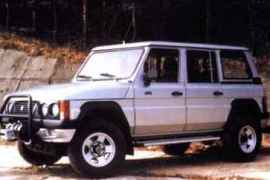ARO 10 Series Models/Series Timeline, Specifications & Photos
First production year: 1980
Engines: Gasoline, Diesel
Body style: SUV (Sports Utility Vehicle)
The ARO 10 was a small SUV that was unveiled at the EREN 1979 (Romanian Exhibition of National Economy). It was unveiled as a 1980 model when the car started to be sold on the market.
The small SUV built in Romania was developed to be a light-utility SUV for both export and domestic market. It was designed by an independent car-designer who applied for a job at the ARO factory and he was hired immediately. The car featured advanced ideas for the era: independent suspension on all four corners and a 4x4 transmission with a low gear. After a few years, the rear independent suspension was replaced by a live axle, which was stronger and more reliable on off-road and could handle heavier loads.
On the outside, it featured a simple, square design, with some elements carried over from Dacia 1300, which was a licensed Renault 12 produced in Romania. A flat front end with a short overhang offered a very good approach angle. The same design was made for the rear part of the car. Strangely, the ARO 10 featured a longer wheelbase than its bigger brother, the ARO 240. It was built in various forms, from a convertible two-door vehicle up to a 4-door pick-up after 2000.
Inside, the initial model featured simple cloth seats and a dashboard carried-over from the Dacia 1300. Over the years, the model featured constant updates. The car was not offered with power-steering or windows. In the U.K., the car was sold as Dacia Duster and was offered with a 4-speed manual only in 1985. An option for GBP 100 stereo system was the only available option.
The initial, 1.2-liter engine was replaced later on with a 1.4-liter unit and, later on, by a 1.9-liter Renault diesel unit.
